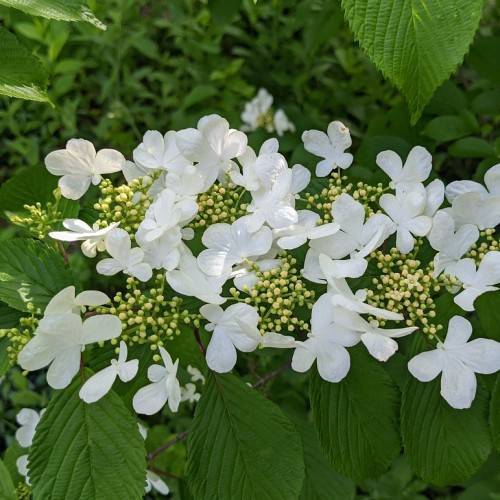
Japanese snowball
Viburnum plicatum f. tomentosum 'Summer Snowflake'
Cycle:
Perennial
Watering:
Average
Hardiness Zone:
5 - 8
Flowers:
Flowers
Sun:
Full sun,part shade
Fruits:
Fruits Ready In Summer
Edible:
Yes
Leaf:
Yes
Growth Rate:
Low
Maintenance:
Low
Drought Tolerant:
Yes
Care Level:
Medium
watering
For Japanese snowball, it is best to water thoroughly once a week, deeply soaking the entire root zone. This should occur in the morning so the plant has time to dry out before evening. In hotter week, supplemental watering may be necessary or plants may need to be watered more frequently during periods of extreme heat. In cooler weeks, plants may need to be watered less. A good rule of thumb is to wait until the top 1-2 inches of soil has dried out before watering again. Keep an eye out for wilting leaves as this can be a sign that the plant is under-watered and needs a deep drink.
sunlight
Japanese snowball plants need full to partial sun in order to thrive, which generally means 4-6 hours of sunlight per day. In areas with a warm climate, these plants should be planted in a location with morning sun and afternoon shade. In cooler climates, provide full sun in the morning and partial shade in the afternoon. Avoid planting them in an area that gets full sun all day, as this can cause the leaves to scorch in hot weather.
pruning
Japanese snowball should be pruned annually in late winter, immediately after blooming or in the early stages of bud development. Pruning should begin when the plant is 2 to 3 years old and lightly every year thereafter. Begin pruning by removing any dead Plant removal of old growth, as well as any suckers (life shoots) from the base of the shrub. Next, thin out the interior stems to allow more light into the center, and reduce the size of the plant if desired. After the pruning, shape and thin out any long stems to the desired size. Lastly, prune off any shoots which are growing outwardly and erratically to maintain the desired shape. Pruning should keep the shrub close to the desired height, while maintaining the natural form of the Japanese snowball.
